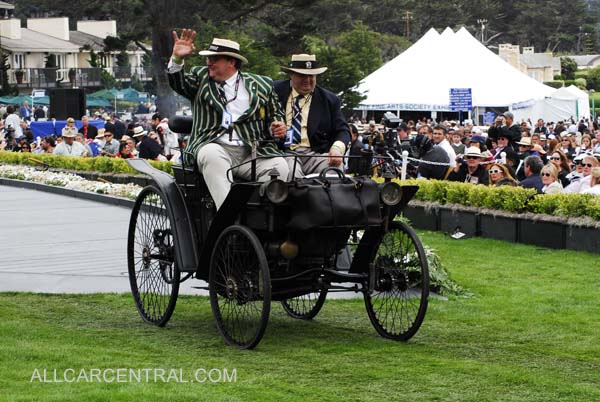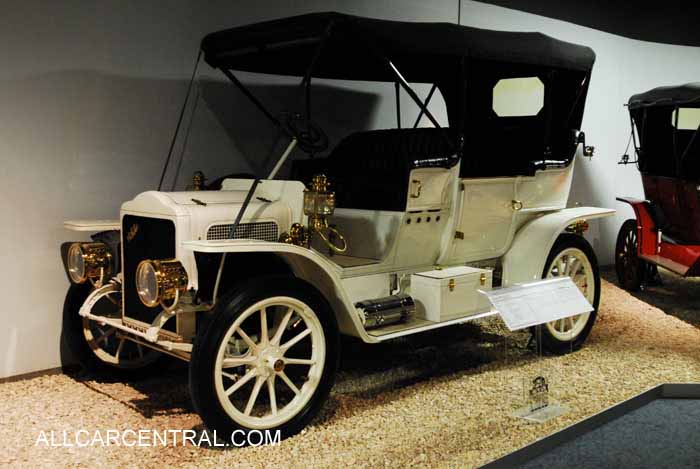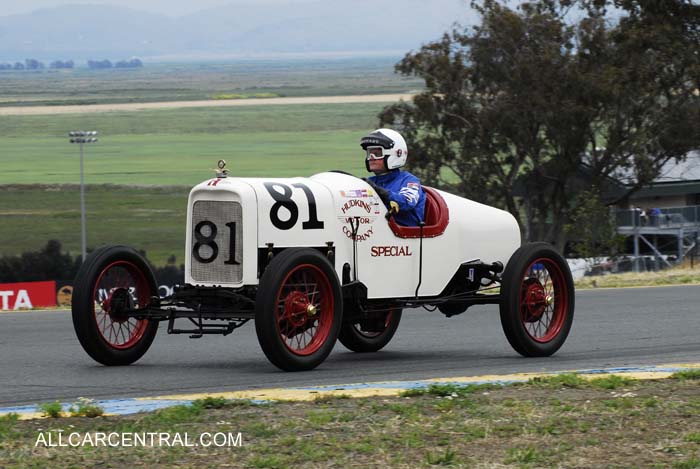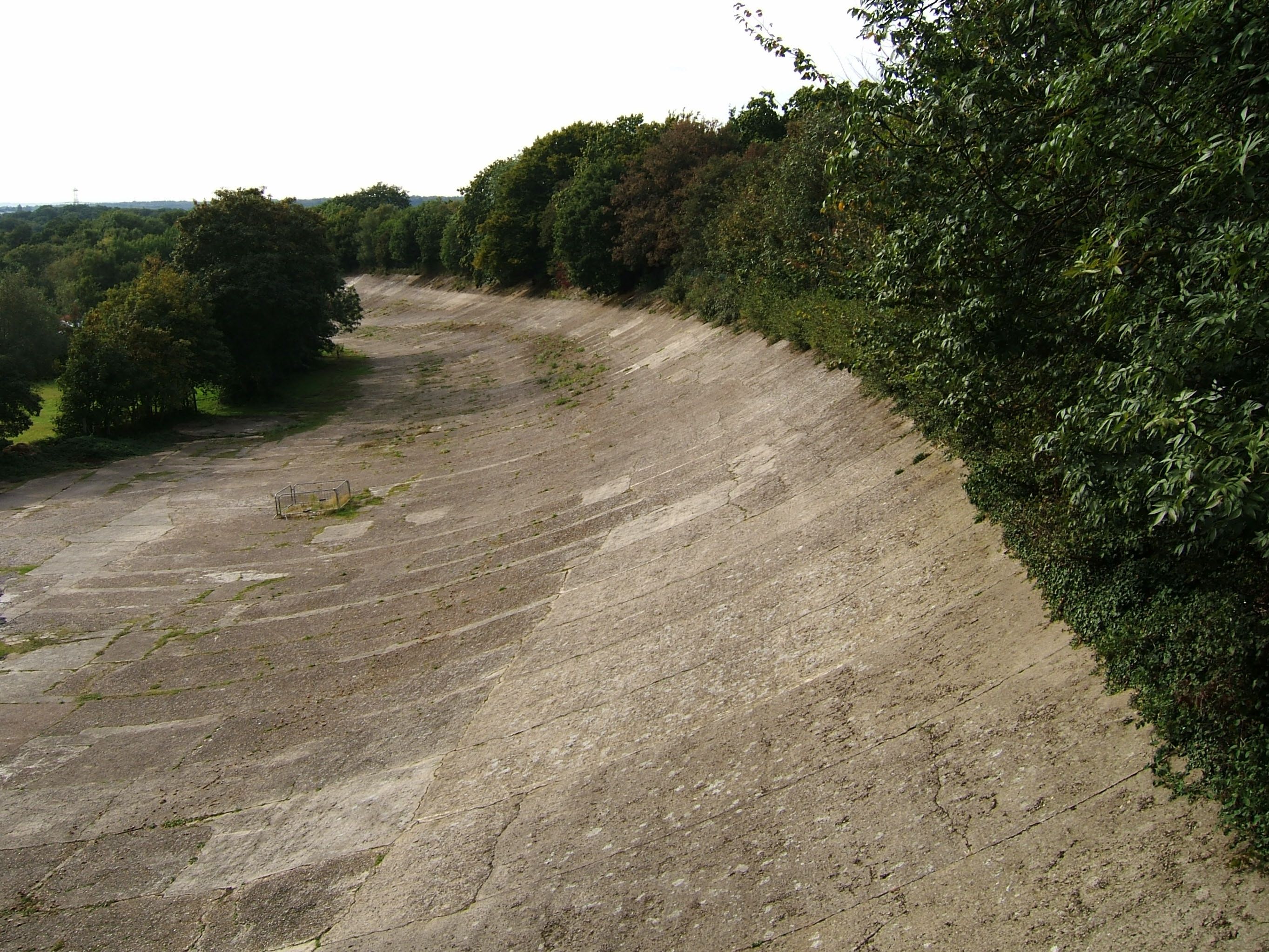The first attempt at racing cars against each other was in Europe. As early as 1892 road races were being held on country roads in France and Italy. In a few cases the results were deadly when the cars sheered off the road and/or the watching crowds simply took up to much of the dirt road and the cars ran into the spectators.
Peugeot Type 3 Vis-a-Vis 1892

In the USA similar events were staged. The winner of the first automobile competitive event held in the US (1895) was Frank Duryea who in company with his brother Charles was the inventor of the Duryea Car, manufactured in Springfield Massachusetts. The average speed of this winning car was between seven to eight miles per hour. It was also the first event of this nature to be sponsored by a newspaper, the Chicago Times-Herald. The route was from Chicago to Evanston, Illinois.
White O Touring 1909

A few years later in 1901 a truly demanding race took place from New York City to Buffalo and the next year a similar run was organized. From New York toBoston. (I think it would be ambitious to describe these endurance events as a racing special as the estimated average speeds were around twenty miles an hour) The famous White Steam Cars were successful in both these events the first featured four such cars and the second nine steamers.
In 1905 the famous Gidden Tour to the White Mountains from New York with twenty five cars competing hit the headlines in New York City, and later across the country when all competitors finished the run without a single breakdown. At almost the same time small local home grown race tracks were springing up all over the USA and with them, home made racing cars put together in a garden shed at weekends.
Model T Ford. Speedsters

One of the most utilized production vehicles modified for dirt track racing was the Model T Ford. Speedsters as they were, and still are called, sprang up all over the country. Some made in back yards others manufactured by skilled engine shops and specialist garages. A number of professional small time motor shops actually produced name brand Speedsters that were sold to would be racer drivers at premium prices.
One of the most famous "would be", race drivers who drove T Type Specials was Noel Bullock of Ord, Nebraska. One of his many achievements was to win the famous Peak Hill Climb in 1922 driving his home made Ford Speedster against a special factory built car. The famous World War One Air Ace Eddie Rickenbacker, drove his modified Duesenberg all over the USA winning various awards. He also purchased the Indianapolis Motor Speedway after the First World War and turned it into a premier world racing center.
His various visits to the famous British Broorklands Race Track in the 1920s encouraged him to stage two and three day events at Indy. At Brooklands before 1914, the start of the First World War, most race events were like a day at the horse track with six or eight competitive events lasting for perhaps thirty minutes with a long pause between races. These was no mechanical reason for this simply an idea that this was what the public wanted and this was the correct way to present competitive racing. In the very early days they even weighed the cars and had the drivers wear colored shits just like horse racing.
Broorklands Race Track
John Chapman Photo via Wikipedia

The Brooklands race track filled in the time between races with string bag air displays, while in the USA live entertainment filled the bill with dancing girls and brass bands.
The idea that you could capture an audience and have then return the next day to see the completion of an event never seemed to dawn on anyone either side of the Atlantic until late in 1928 when by chance a small speclized group of private racing car owners had the idea of creating a 1000 mile race on a single race track.
Bill Thompson, the track manager at Indy and a close friend of Eddie Rickenbacker was visiting England to discuss the idea of an Anglo American event at Brooklands where Rickenbacker had competed several times in earlier years. The idea was to include a return competition at Indy again with British and American drivers.
On paper it looked attractive especially as both Britain and the US were starting to make waves of success at various world motor racing events. However, the economics of such a venture were not attractive to most private drivers as the cost of transport to and from both countries was considerable not to mention the costs of support crews, spare parts and decent accommodation. All this for a couple of one day events with a single prize for the winner. As indicated earlier no one had ever staged a major competitive distance competition on a single race track. Trial runs yes such as how fast can one car go in twenty four hours or how far on a given amount of fuel etc., But a major competition like the European LeManns run over twenty four hours on open roads was doubtful and the authorities in both countries would certainly be reluctant to grant permission for fear of serious injury both to drivers and spectators. (The French and Italians did not suffer from such restrictions!)
Strange how fate seems to pop up at what in retrospect is/was the right time.
Whilst all the debate about a major Anglo American event was being discussed the British Junior Car Club, owners who had small converted production race cars of up to 1300 cc capacity approached the Board of Brooklands suggesting that a thousand mile competitive race be staged spread over two days. In reality this meant that each car had to complete 200 laps of the Brooklands track and, because of legal restrictions forbidding any competitive driving at night, cease at the first sign of dusk and repeat the procedure again the next day with the objective of completing a second 200 laps to complete the required 1000 miles. The smallest engine class was the baby 750 cc MGs the largest the 1295cc Riley's. No driver was allowed to touch, clean or even look at his car once it was locked away in a special paddock over night. Security Guards would patrol the storage area from dusk to when ever the race started its second day.
To endorse their proposal the British Junior Club agreed to under write the whole venture win or lose on the financial returns. It is not clear what the final vote of the Board was on this proposal but be it suffice to say they agreed to a trail event for June 3rd and 4th 1932, the start of the motor racing season. Thompson must have reported the proposal to his boss as Rickenbacker indicated that he would attend and was immediately granted special membership of the Brooklands Club. Not an easy thing to obtain in those days!
The race started at 10am with the first batch of small powered vehicles off to a brisk start followed at various intervals but each of the selected engine size groups with the big boys at 1300cc departing at around 10.30 am. As to be expected there were quite a number of cars that never lasted the day and were forced to drop out. It is also recorded that this was not only due to mechanical problems. Twelve or more hours circulating around the same concrete track alone in a small tin box on wheels can put a strain on the best of drivers.
The real threat was to lose concentration and take off over the rim of the banking to end up thirty feet below either in the river or worse in a suburban back garden!
Now add the dust from the cement surface and the flying stones from the competitor a few yards in front of you.
By dusk on the first day about 80 percent of the field was still in the race but, if you had not completed the allotted 200 laps the missing distance was added to your requirement the next day. As to be expected the large Talbot's took the team prize and a Riley with an all female crew won the individual event within in their class.
Two American drivers competed and finished the race but it is not recorded what the owner of Indy actually thought about the event or if any plans were ever made to introduce a similar challenge on his track. However, it is interesting to note that soon after this two day events did start to take place at Indy and were successful both in terms of competitors and financial returns. Those of you that have read my review of Brooklands will know the sad end to this once Mecca of motor racing. Thank Goodness America has taken better care of its motor history.
Geoff Wheatley




BACK TO TOP